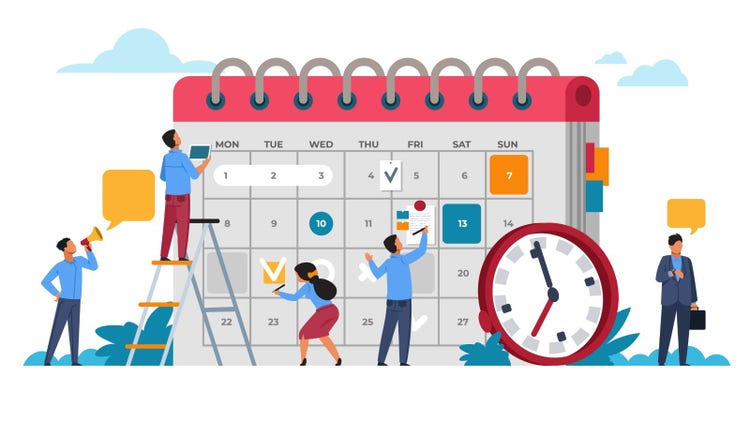Building a Content Calendar That Works: Tips for Organizing Your Strategy
In the realm of digital marketing, a well-organized content calendar is more than just a schedule—it's a strategic roadmap that guides your content creation efforts, ensures consistency, and maximizes engagement with your target audience. This comprehensive guide delves into the essential components and best practices for building an effective content calendar that supports your overarching marketing goals and drives sustainable growth.
Importance of a Content Calendar
A content calendar serves as a centralized hub for planning and managing all your content initiatives across various channels and platforms. By providing a structured framework, it helps streamline workflows, maintain consistency in messaging, and align content creation efforts with your business objectives. Key benefits include:
- Improved Organization: Structuring content creation, publication dates, and promotional activities in advance.
- Enhanced Collaboration: Facilitating teamwork and communication among content creators, designers, and marketers.
- Consistency: Maintaining a steady flow of content to keep audiences engaged and informed.
- Scalability: Adapting strategies and content themes to accommodate business growth and evolving audience preferences.
Essential Components of a Content Calendar
1. Content Types and Themes
Define the types of content you'll create (e.g., blog posts, videos, infographics) and align them with overarching themes or topics relevant to your audience and business objectives. This ensures a balanced mix of content that addresses various stages of the buyer's journey.
2. Publication Schedule
Establish a consistent publishing cadence based on audience behavior and platform analytics. Consider factors such as peak engagement times, content freshness, and seasonal trends to optimize reach and impact.
3. Content Goals and Objectives
Set clear goals for each piece of content, whether it's to drive traffic, generate leads, nurture relationships, or increase brand awareness. Define measurable objectives (e.g., page views, conversions, social shares) to gauge performance and ROI.
4. Content Calendar Template
Choose a format or tool that suits your team's workflow and preferences. Popular options include spreadsheet-based templates (e.g., Google Sheets, Excel) or dedicated project management tools (e.g., Trello, Asana) that allow for easy tracking, scheduling, and collaboration.
5. Content Creation and Approval Workflow
Outline the workflow from ideation to publication, including roles and responsibilities, deadlines, and approval processes. Ensure clear communication channels and accountability to maintain efficiency and quality standards.
6. Promotion and Distribution Plan
Plan how and where each piece of content will be promoted across owned, earned, and paid channels. Incorporate tactics such as email newsletters, social media posts, influencer partnerships, and SEO optimization to maximize visibility and engagement.
Tips for Organizing Your Content Calendar
1. Conduct Audience Research
Understand your target audience's preferences, interests, and pain points. Tailor content themes and formats to resonate with their needs and deliver value consistently.
2. Align with Marketing Campaigns
Integrate content calendar activities with broader marketing campaigns and initiatives. Ensure alignment with seasonal promotions, product launches, and key events to amplify messaging and reinforce brand messaging.
3. Balance Evergreen and Timely Content
Strike a balance between evergreen content (timeless, relevant year-round) and timely content (seasonal, trending topics) to maintain relevance and maximize long-term visibility and engagement.
4. Monitor Industry Trends and Competitor Activity
Stay informed about industry trends, competitor strategies, and emerging topics to capitalize on opportunities and differentiate your content offerings.
5. Review and Iterate
Regularly review content performance metrics and calendar effectiveness. Use insights to refine strategies, experiment with new formats, and optimize future content planning and execution.
Implementing Your Content Calendar Strategy
1. Content Creation
Allocate dedicated time for content ideation, creation, and refinement based on your calendar schedule and editorial deadlines. Encourage creativity and collaboration among team members to generate fresh ideas and perspectives.
2. Content Optimization
Optimize content for SEO by incorporating relevant keywords, meta tags, and internal linking strategies. Leverage analytics tools to monitor keyword performance and refine content strategies accordingly.
3. Content Distribution
Execute your promotion and distribution plan across selected channels, ensuring consistent messaging and alignment with audience preferences and platform algorithms.
4. Measurement and Analysis
Track key performance indicators (KPIs) such as traffic, engagement, conversions, and ROI. Use analytics dashboards and reports to evaluate content effectiveness and make data-driven decisions for future campaigns.
Case Studies and Examples
Explore case studies of brands that have successfully implemented content calendars to drive engagement and achieve marketing objectives. For instance, a fashion retailer increased website traffic by 30% by strategically planning and publishing seasonal content aligned with customer preferences and trends.
A well-organized content calendar is a fundamental tool for streamlining content creation, maintaining consistency, and driving meaningful engagement with your target audience. By incorporating these tips and best practices into your content planning process, you can optimize resource allocation, enhance collaboration, and achieve measurable results in your content marketing efforts.
Embrace the strategic benefits of a content calendar to navigate the complexities of digital marketing, adapt to evolving consumer behaviors, and achieve sustainable growth in today's competitive landscape.






































